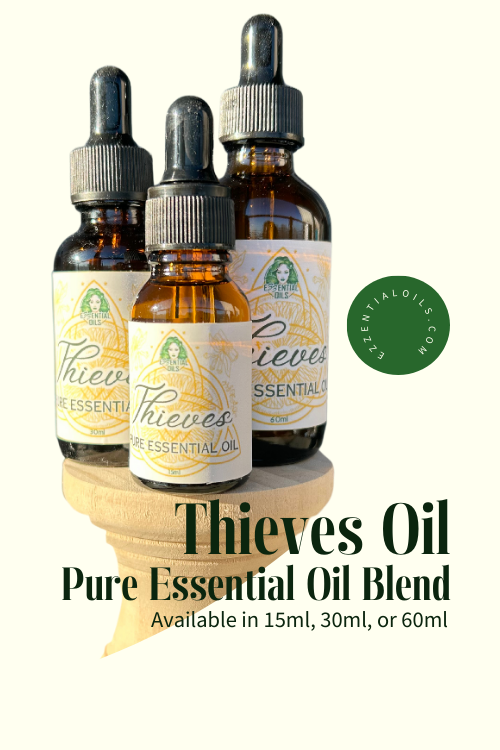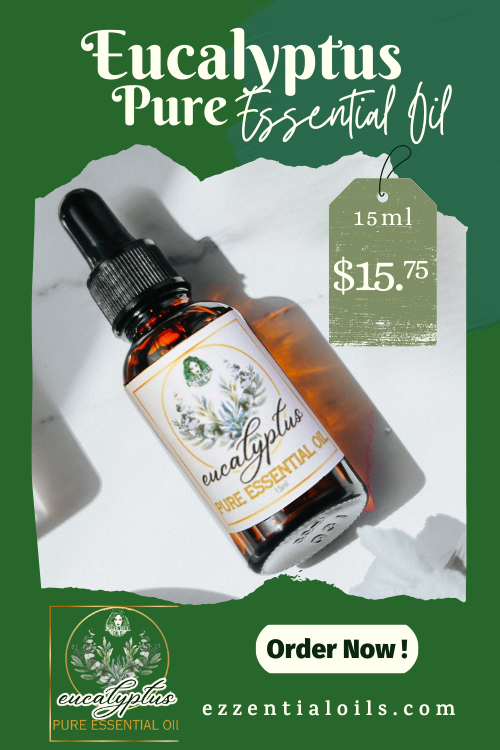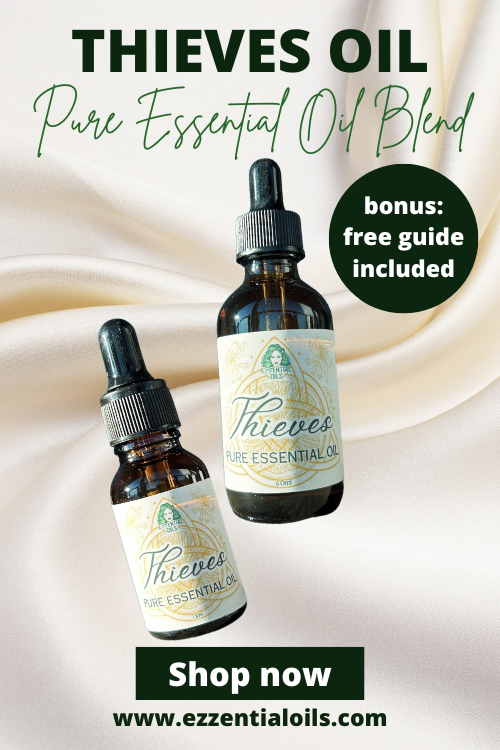Are Essential Oils Safe For Kids?
What You Need To Know To Protect Your Family
While essential oils can offer many positive effects, such as promoting relaxation, improving sleep, and supporting emotional balance, they must be used responsibly to ensure a child's well-being. Understanding the unique sensitivities of children, particularly their skin, respiratory systems, and developing immune systems, is crucial to safely introducing essential oils. By following guidelines for dilution, application, and age-appropriate choices, parents can enhance their child's wellness through the gentle use of aromatherapy.
Understanding Essential Oils and Children's Sensitivities
Children are naturally more sensitive to essential oils due to their delicate skin, underdeveloped respiratory systems, and growing immune systems. Their skin is thinner and more permeable, allowing substances to absorb more quickly and deeply, which can increase the potency of essential oils. Similarly, their respiratory systems are smaller and still developing, making them more susceptible to strong scents or airborne particles. These sensitivities mean that essential oils, while beneficial, must be used cautiously and in smaller amounts than for adults.
If not used properly, essential oils can pose several risks for children, including skin irritation, allergic reactions, and even respiratory issues. Direct application of undiluted oils can cause redness, rashes, or burning sensations, especially in sensitive individuals. Inhalation of strong oils, such as Eucalyptus or Peppermint, can overwhelm a child's respiratory system, potentially causing coughing or breathing difficulties. Additionally, overuse or improper use may result in headaches, nausea, or overstimulation, underscoring the importance of careful and informed application.
Age plays a crucial role in determining how essential oils can be used with children. For infants under six months, essential oils are generally not recommended unless advised by a healthcare professional. For toddlers aged six months to two years, only a select few oils, such as Lavender or Roman Chamomile, should be used in highly diluted forms. Older children aged two and above can safely enjoy a wider range of essential oils when properly diluted and applied using age-appropriate methods. Tailoring usage to a child's developmental stage ensures both safety and effectiveness.
Essential Oils Safe for Children
Certain essential oils are considered safe and beneficial for children aged two years and older when used appropriately. Lavender is a versatile oil known for its calming and sleep-promoting properties, making it an excellent choice for bedtime routines. Chamomile, particularly Roman Chamomile, is gentle and soothing, helping to alleviate mild anxiety and emotional distress. Frankincense is another child-safe option that supports relaxation and grounding, often used during quiet moments or meditation. These oils have mild properties and a proven safety record, making them ideal for young children when properly diluted.
It's essential to avoid certain essential oils for children under two years old, as their strong chemical compositions can pose risks. Eucalyptus and Peppermint, while popular for respiratory support, contain compounds that may irritate young respiratory systems. Cinnamon oil is another to avoid, as its potency can cause skin irritation or allergic reactions. By steering clear of these and other potent oils, parents can reduce the risk of adverse effects while still benefiting from aromatherapy's gentler options.
When selecting essential oils for specific concerns, choosing the right oil can address common childhood issues effectively. Lavender is a go-to for sleep difficulties, helping children wind down and promoting restful sleep. Chamomile, particularly German Chamomile, can ease digestive discomfort when diluted and applied gently to the abdomen. For mild anxiety or emotional tension, Roman Chamomile offers a calming, comforting effect. Tailoring essential oil choices to a child's needs ensures a safe and beneficial aromatherapy experience.
The following essential oil combinations are safe for children and designed to address specific moods and concerns, from calming and relaxation to focus and creativity. Here's a list of kid-friendly blends and suggestions on how to incorporate them into your child's routine:
Forest Calm (Black Spruce and Bergamot): A grounding and calming blend that helps release tension and promotes tranquility.
Citrus Burst (Lemon and Orange): A cheerful and energizing combination that lifts the spirits and refreshes the senses.
Gingered Zest (Tangerine and Ginger): A gentle yet invigorating blend that supports digestion and provides a boost of vitality.
Citrus Clarity (Spearmint and Orange): Clears mental fog and enhances focus, helping your child stay engaged and alert.
Lavender Bliss (Lavender and Cedarwood): A calming blend that helps your child unwind, making it ideal for promoting restful sleep or relieving stress.
Tranquil Spirit (Frankincense and Roman Chamomile): Eases anxiety and calms the mind, helping children find emotional balance.
Creative Roots (Clary Sage and Vetiver): Encourages creativity and emotional grounding, perfect for moments of inspiration or mental blocks.
To use these blends safely with children, consider diffusing them in the air, applying them topically (diluted with a carrier oil), or using a personal inhaler for on-the-go comfort. Always be sure to follow appropriate dilution ratios and age guidelines when introducing essential oils into your child's routine.
How to Safely Use Essential Oils with Children
Dilution is one of the most critical steps when using essential oils with children, as their skin and systems are far more sensitive than adults. Always dilute essential oils with a carrier oil like coconut, almond, or jojoba oil to reduce potency and prevent irritation. Safe dilution ratios vary by age: for infants under six months, avoid essential oils entirely unless advised by a professional; for children aged six months to two years, use a 0.25% dilution (one drop per four teaspoons of carrier oil); and for children aged two to six years, a 0.5% to 1% dilution (one drop per two teaspoons of carrier oil). These guidelines ensure safe and effective use tailored to your child's needs.
When applying essential oils, choose methods appropriate for children to minimize risks. Diffusion is one of the safest options—using a diffuser to disperse essential oils into the air creates a calming environment without direct skin contact. For topical application, focus on diluted oils applied to non-sensitive areas like the feet or pulse points, which can promote relaxation or provide targeted benefits.
Inhalation is another safe method; using a drop on a tissue or a personal inhaler allows older children to benefit from aromatherapy without prolonged exposure. Each method ensures the oils are introduced gently and safely.
It's crucial to avoid applying essential oils to sensitive areas like the eyes, mucous membranes, or broken skin, as this can cause severe irritation or discomfort. Always conduct a patch test on a small area of skin, such as the forearm, to check for any allergic reactions before broader application. This precautionary step, combined with careful placement and age-appropriate methods, provides a safe way to integrate essential oils into your child's wellness routine.
Common Risks and How to Prevent Them
When using essential oils with children, one of the most common risks is skin irritation or allergic reactions. Symptoms of irritation include redness, itching, or a burning sensation on the skin, while allergic reactions may present as rashes or hives. To prevent these issues, always conduct a patch test before applying essential oils topically. Mix a drop of diluted essential oil with a carrier oil and apply it to a small area of the child's inner arm or wrist. Wait 24 hours to check for any adverse reaction before broader use. This simple step can help identify sensitivities and avoid unnecessary discomfort.
Respiratory concerns are another potential risk, particularly with strong oils like Eucalyptus or Peppermint. These oils contain compounds that, while beneficial for adults, may irritate the delicate respiratory systems of young children, especially those under the age of 6. To minimize this risk, always use essential oils in a well-ventilated area and opt for milder alternatives when diffusing around children. Limiting exposure time and ensuring the child is not directly inhaling concentrated vapors can further reduce the likelihood of respiratory discomfort.
Overuse of essential oils is a less obvious but equally significant concern. Applying too much oil, using it too frequently, or exposing children to strong scents for extended periods can overwhelm their developing senses and bodies. Signs of overexposure include headaches, dizziness, or nausea. To avoid this, adhere to age-appropriate dilution guidelines and limit aromatherapy sessions to short, controlled periods. These precautions help ensure that essential oils are a safe and effective tool for supporting a child's well-being.
Best Practices for Using Aromatherapy with Children
When using aromatherapy with children, it's crucial to start with the lowest possible doses of essential oils to ensure safety and minimize the risk of adverse reactions. Children are more sensitive to aromatic compounds, so begin with heavily diluted oils—using a 0.25% to 1% dilution, depending on the child's age—and increase the amount only if necessary and well-tolerated. Gradual introduction allows parents to observe any reactions and adjust accordingly. Always prioritize age-appropriate oils, and remember that less is often more when it comes to children.
Before incorporating essential oils into a child's wellness routine, consulting with a pediatrician or qualified healthcare professional is highly recommended. This is particularly important if the child has pre-existing health conditions, allergies, or sensitivities. Additionally, using only natural, pure essential oils is essential to avoid harmful additives or synthetic fragrances that could irritate the skin or respiratory system. Look for trusted brands that provide detailed testing and sourcing information to ensure quality and safety. By following these best practices, parents can confidently and safely introduce their children to the benefits of aromatherapy.
Alternatives to Essential Oils for Children
For younger children, especially infants and toddlers, non-essential oil alternatives can be an excellent way to promote relaxation and well-being without the risks associated with strong aromatic compounds. Herbal teas, such as chamomile or peppermint (age-appropriate and consumed in moderation), can soothe discomfort and support relaxation. Gentle massage using a carrier oil like coconut or almond oil without added essential oils can provide comfort and nurture the parent-child bond. Establishing calming routines, such as a warm bath before bedtime or quiet story time, can also have profound soothing effects without the need for aromatherapy.
For those who still want to introduce aromatherapy in a gentler way, pre-diluted essential oil blends specifically designed for children are a safer option. These blends typically follow stricter dilution guidelines and feature oils known to be child-safe, like Lavender or Roman Chamomile. Another excellent choice is hydrosols, also known as flower waters, which are the byproduct of essential oil distillation. Hydrosols, such as rose or chamomile water, are much milder but still carry the gentle aromatic properties of the plant, making them ideal for use with young children. They can be applied directly to the skin or used in a spray for a light, calming effect.
By opting for these alternatives, parents can ensure the safety and comfort of their children while still enjoying the soothing benefits of natural wellness practices. These approaches reduce the risk of skin irritation, respiratory issues, and overexposure, providing peace of mind while fostering a relaxing and nurturing environment for little ones.
Essential oils can provide valuable benefits for children, such as promoting relaxation, improving sleep, and supporting emotional well-being, but safety is paramount. By following proper guidelines for dilution, application, and age-appropriate oils, parents can confidently introduce aromatherapy into their child's routine. Remember, when used correctly, essential oils can enhance your child's wellness in a gentle and effective way. To learn more about how aromatherapy can help with improving your child's sleep, be sure to check out our "Better Sleep For Kids" article for further insights and practical tips.
This article is for information purposes only. All Ezzential Oils products are for external use only unless otherwise indicated. This information is not intended to diagnose, treat, cure, or prevent any disease, and it should not be used by anyone who is pregnant or under the care of a medical practitioner. Please refer to our policies for further details, and our disclaimer below.
Understanding Essential Oils and Children's Sensitivities
Children are naturally more sensitive to essential oils due to their delicate skin, underdeveloped respiratory systems, and growing immune systems. Their skin is thinner and more permeable, allowing substances to absorb more quickly and deeply, which can increase the potency of essential oils. Similarly, their respiratory systems are smaller and still developing, making them more susceptible to strong scents or airborne particles. These sensitivities mean that essential oils, while beneficial, must be used cautiously and in smaller amounts than for adults.
If not used properly, essential oils can pose several risks for children, including skin irritation, allergic reactions, and even respiratory issues. Direct application of undiluted oils can cause redness, rashes, or burning sensations, especially in sensitive individuals. Inhalation of strong oils, such as Eucalyptus or Peppermint, can overwhelm a child's respiratory system, potentially causing coughing or breathing difficulties. Additionally, overuse or improper use may result in headaches, nausea, or overstimulation, underscoring the importance of careful and informed application.
Age plays a crucial role in determining how essential oils can be used with children. For infants under six months, essential oils are generally not recommended unless advised by a healthcare professional. For toddlers aged six months to two years, only a select few oils, such as Lavender or Roman Chamomile, should be used in highly diluted forms. Older children aged two and above can safely enjoy a wider range of essential oils when properly diluted and applied using age-appropriate methods. Tailoring usage to a child's developmental stage ensures both safety and effectiveness.
Essential Oils Safe for Children
Certain essential oils are considered safe and beneficial for children aged two years and older when used appropriately. Lavender is a versatile oil known for its calming and sleep-promoting properties, making it an excellent choice for bedtime routines. Chamomile, particularly Roman Chamomile, is gentle and soothing, helping to alleviate mild anxiety and emotional distress. Frankincense is another child-safe option that supports relaxation and grounding, often used during quiet moments or meditation. These oils have mild properties and a proven safety record, making them ideal for young children when properly diluted.
It's essential to avoid certain essential oils for children under two years old, as their strong chemical compositions can pose risks. Eucalyptus and Peppermint, while popular for respiratory support, contain compounds that may irritate young respiratory systems. Cinnamon oil is another to avoid, as its potency can cause skin irritation or allergic reactions. By steering clear of these and other potent oils, parents can reduce the risk of adverse effects while still benefiting from aromatherapy's gentler options.
When selecting essential oils for specific concerns, choosing the right oil can address common childhood issues effectively. Lavender is a go-to for sleep difficulties, helping children wind down and promoting restful sleep. Chamomile, particularly German Chamomile, can ease digestive discomfort when diluted and applied gently to the abdomen. For mild anxiety or emotional tension, Roman Chamomile offers a calming, comforting effect. Tailoring essential oil choices to a child's needs ensures a safe and beneficial aromatherapy experience.
The following essential oil combinations are safe for children and designed to address specific moods and concerns, from calming and relaxation to focus and creativity. Here's a list of kid-friendly blends and suggestions on how to incorporate them into your child's routine:
Forest Calm (Black Spruce and Bergamot): A grounding and calming blend that helps release tension and promotes tranquility.
Citrus Burst (Lemon and Orange): A cheerful and energizing combination that lifts the spirits and refreshes the senses.
Gingered Zest (Tangerine and Ginger): A gentle yet invigorating blend that supports digestion and provides a boost of vitality.
Citrus Clarity (Spearmint and Orange): Clears mental fog and enhances focus, helping your child stay engaged and alert.
Lavender Bliss (Lavender and Cedarwood): A calming blend that helps your child unwind, making it ideal for promoting restful sleep or relieving stress.
Tranquil Spirit (Frankincense and Roman Chamomile): Eases anxiety and calms the mind, helping children find emotional balance.
Creative Roots (Clary Sage and Vetiver): Encourages creativity and emotional grounding, perfect for moments of inspiration or mental blocks.
To use these blends safely with children, consider diffusing them in the air, applying them topically (diluted with a carrier oil), or using a personal inhaler for on-the-go comfort. Always be sure to follow appropriate dilution ratios and age guidelines when introducing essential oils into your child's routine.
How to Safely Use Essential Oils with Children
Dilution is one of the most critical steps when using essential oils with children, as their skin and systems are far more sensitive than adults. Always dilute essential oils with a carrier oil like coconut, almond, or jojoba oil to reduce potency and prevent irritation. Safe dilution ratios vary by age: for infants under six months, avoid essential oils entirely unless advised by a professional; for children aged six months to two years, use a 0.25% dilution (one drop per four teaspoons of carrier oil); and for children aged two to six years, a 0.5% to 1% dilution (one drop per two teaspoons of carrier oil). These guidelines ensure safe and effective use tailored to your child's needs.
When applying essential oils, choose methods appropriate for children to minimize risks. Diffusion is one of the safest options—using a diffuser to disperse essential oils into the air creates a calming environment without direct skin contact. For topical application, focus on diluted oils applied to non-sensitive areas like the feet or pulse points, which can promote relaxation or provide targeted benefits.
Inhalation is another safe method; using a drop on a tissue or a personal inhaler allows older children to benefit from aromatherapy without prolonged exposure. Each method ensures the oils are introduced gently and safely.
It's crucial to avoid applying essential oils to sensitive areas like the eyes, mucous membranes, or broken skin, as this can cause severe irritation or discomfort. Always conduct a patch test on a small area of skin, such as the forearm, to check for any allergic reactions before broader application. This precautionary step, combined with careful placement and age-appropriate methods, provides a safe way to integrate essential oils into your child's wellness routine.
Common Risks and How to Prevent Them
When using essential oils with children, one of the most common risks is skin irritation or allergic reactions. Symptoms of irritation include redness, itching, or a burning sensation on the skin, while allergic reactions may present as rashes or hives. To prevent these issues, always conduct a patch test before applying essential oils topically. Mix a drop of diluted essential oil with a carrier oil and apply it to a small area of the child's inner arm or wrist. Wait 24 hours to check for any adverse reaction before broader use. This simple step can help identify sensitivities and avoid unnecessary discomfort.
Respiratory concerns are another potential risk, particularly with strong oils like Eucalyptus or Peppermint. These oils contain compounds that, while beneficial for adults, may irritate the delicate respiratory systems of young children, especially those under the age of 6. To minimize this risk, always use essential oils in a well-ventilated area and opt for milder alternatives when diffusing around children. Limiting exposure time and ensuring the child is not directly inhaling concentrated vapors can further reduce the likelihood of respiratory discomfort.
Overuse of essential oils is a less obvious but equally significant concern. Applying too much oil, using it too frequently, or exposing children to strong scents for extended periods can overwhelm their developing senses and bodies. Signs of overexposure include headaches, dizziness, or nausea. To avoid this, adhere to age-appropriate dilution guidelines and limit aromatherapy sessions to short, controlled periods. These precautions help ensure that essential oils are a safe and effective tool for supporting a child's well-being.
Best Practices for Using Aromatherapy with Children
When using aromatherapy with children, it's crucial to start with the lowest possible doses of essential oils to ensure safety and minimize the risk of adverse reactions. Children are more sensitive to aromatic compounds, so begin with heavily diluted oils—using a 0.25% to 1% dilution, depending on the child's age—and increase the amount only if necessary and well-tolerated. Gradual introduction allows parents to observe any reactions and adjust accordingly. Always prioritize age-appropriate oils, and remember that less is often more when it comes to children.
Before incorporating essential oils into a child's wellness routine, consulting with a pediatrician or qualified healthcare professional is highly recommended. This is particularly important if the child has pre-existing health conditions, allergies, or sensitivities. Additionally, using only natural, pure essential oils is essential to avoid harmful additives or synthetic fragrances that could irritate the skin or respiratory system. Look for trusted brands that provide detailed testing and sourcing information to ensure quality and safety. By following these best practices, parents can confidently and safely introduce their children to the benefits of aromatherapy.
Alternatives to Essential Oils for Children
For younger children, especially infants and toddlers, non-essential oil alternatives can be an excellent way to promote relaxation and well-being without the risks associated with strong aromatic compounds. Herbal teas, such as chamomile or peppermint (age-appropriate and consumed in moderation), can soothe discomfort and support relaxation. Gentle massage using a carrier oil like coconut or almond oil without added essential oils can provide comfort and nurture the parent-child bond. Establishing calming routines, such as a warm bath before bedtime or quiet story time, can also have profound soothing effects without the need for aromatherapy.
For those who still want to introduce aromatherapy in a gentler way, pre-diluted essential oil blends specifically designed for children are a safer option. These blends typically follow stricter dilution guidelines and feature oils known to be child-safe, like Lavender or Roman Chamomile. Another excellent choice is hydrosols, also known as flower waters, which are the byproduct of essential oil distillation. Hydrosols, such as rose or chamomile water, are much milder but still carry the gentle aromatic properties of the plant, making them ideal for use with young children. They can be applied directly to the skin or used in a spray for a light, calming effect.
By opting for these alternatives, parents can ensure the safety and comfort of their children while still enjoying the soothing benefits of natural wellness practices. These approaches reduce the risk of skin irritation, respiratory issues, and overexposure, providing peace of mind while fostering a relaxing and nurturing environment for little ones.
Essential oils can provide valuable benefits for children, such as promoting relaxation, improving sleep, and supporting emotional well-being, but safety is paramount. By following proper guidelines for dilution, application, and age-appropriate oils, parents can confidently introduce aromatherapy into their child's routine. Remember, when used correctly, essential oils can enhance your child's wellness in a gentle and effective way. To learn more about how aromatherapy can help with improving your child's sleep, be sure to check out our "Better Sleep For Kids" article for further insights and practical tips.
This article is for information purposes only. All Ezzential Oils products are for external use only unless otherwise indicated. This information is not intended to diagnose, treat, cure, or prevent any disease, and it should not be used by anyone who is pregnant or under the care of a medical practitioner. Please refer to our policies for further details, and our disclaimer below.













